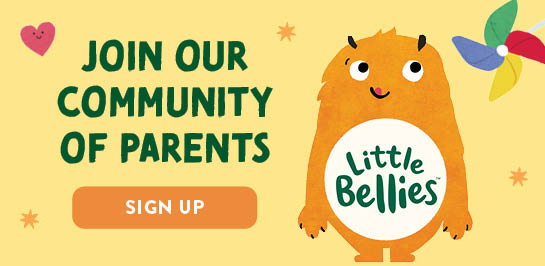How to Pack a Healthy Lunchbox for Toddlers and Preschoolers
Reading time:
Reading time:

If you have a toddler or preschooler in your home, packing a nutritious lunchbox for them is a simple way to ensure that they are getting the fuel that they need to grow and thrive.
A lunchbox allows you to define the right balance of nutritious foods and snacks in appropriate portions for your child. And this is exactly what their little bodies need to get sustained energy and key nutrients that support growth and development.
This article will provide some tips and ideas to take the guesswork out of packing balanced lunches that your child will love. Let’s get started!
A nutritious lunch gives toddlers and preschoolers the nutrients they need to support their growth and development.
Between ages 1 and 5 years, children experience rapid growth and require nutrient-dense foods to thrive. Their physical activity levels also increase substantially, so they need foods that provide lots of energy to keep up.
Unfortunately, many lunchbox favourites like sugary snacks, fruit juices, and processed deli meats are low in nutrients and high in unnecessary added sugar and salt. When you rely too heavily on these, your child might end up missing out on many essential vitamins and minerals and fall into bad habits of eating high-sugar, processed foods to get quick energy.
Healthy lunches that balance protein, whole grains, fruit and vegetables will provide optimal nutrition and lasting energy. This will help avoid the “crash” from high-sugar foods and ensure long-term satiety. The rule of thumb is if you are providing a carbohydrate, like bread, pasta, or crackers, ensure that it is paired with a protein source. This will help with sustained energy through the day, rather than having energy peaks and crashes which happens when eating refined carbohydrates on their own.
Additionally, these early formative years help lay the foundation for lifelong eating habits. Exposing young children to a variety of healthy foods sets them up to enjoy nutritious choices as they grow up.
With a little bit of planning, you can pack healthy lunches they’ll love while keeping nutrition a priority.
While toddlers and preschoolers have similar nutritional needs, there are some differences in the recommended daily intake of certain nutrients. It is also very important to remember that every child is an individual, therefore these quantities are only an estimate. It’s important to allow your child to regulate, which may mean that your child eats more or less than his/her peers and this is OK. It’s also important to focus on what your child eats over 3 days rather than focusing on every meal and every day as it’s normal for a child’s intake to have considerable variability across days. Here’s everything you need to know:
As you can see from above, the difference in their needs does not differ that much between the two age groups. They both benefit from eating a variety of nutrient-rich foods. The key is to read their signs and offer food until they are full and allow them to stop a meal when they say they are done. The most important skill you can teach your child is how to regulate themselves and to be able to listen to their body.
Packing a healthy lunchbox starts with stocking your pantry with wholesome food staples. Here are some nutritious options to include from each food group:
If you prefer buying packaged foods rather than cooking meals at home, focus on minimally processed options and look for items with short ingredient lists. Little Bellies offers an extensive range of wholesome, organic, clean and simple snacks that would make a perfect addition to a healthy lunchbox for toddlers and preschoolers:
Pre-schooler lunchbox ideas:
Water helps to digest food and keeps kids going between meals. Kids can feel hungry when they are dehydrated as hunger symptoms are very similar to thirst. So, make sure they always have plenty of water with them.
Avoid sugary beverages like juice drinks or chocolate milk which are just empty calories – lots of sugar, minimal or zero nutritional value. Adding lemon, cucumber, or frozen berries to the water can help jazz it up a little and make it more flavourful to encourage drinking.
As you can see, with a little creativity and some preparation, packing nutritious lunchboxes for your toddler or pre-schooler is easy. The key takeaway here is that you need to focus on providing balanced portions of wholesome foods for maximum nutrition and long-term satiety. Bon Appétit!
Photo by Ola Mishchenko on Unsplash

Let’s Make It Official
Get the latest news on parenting tips, food play hacks, promotions and giveaways!
Subscribe Now